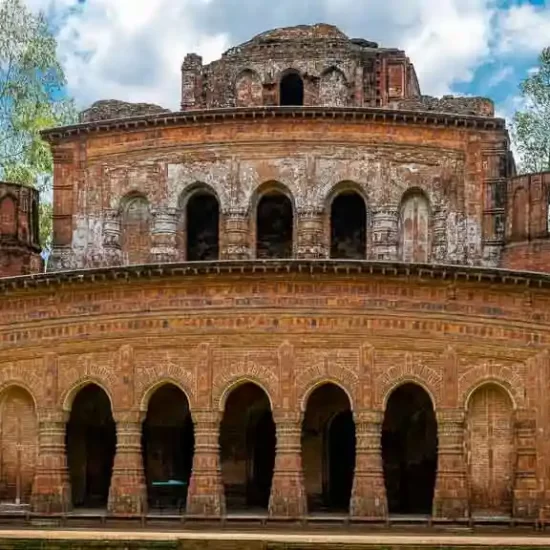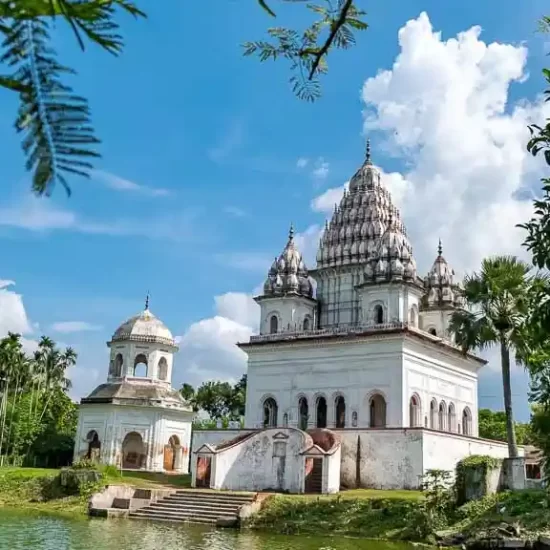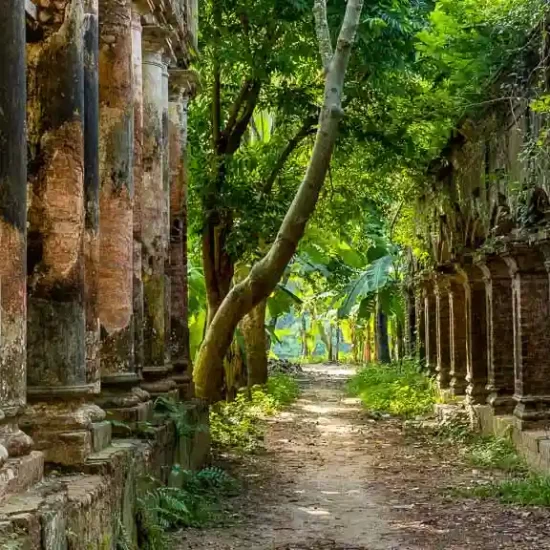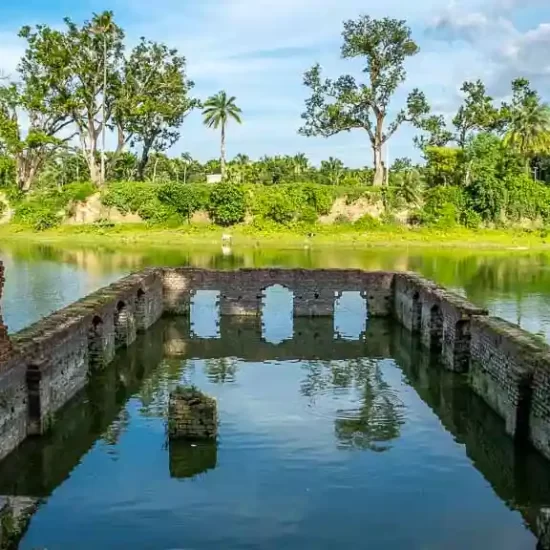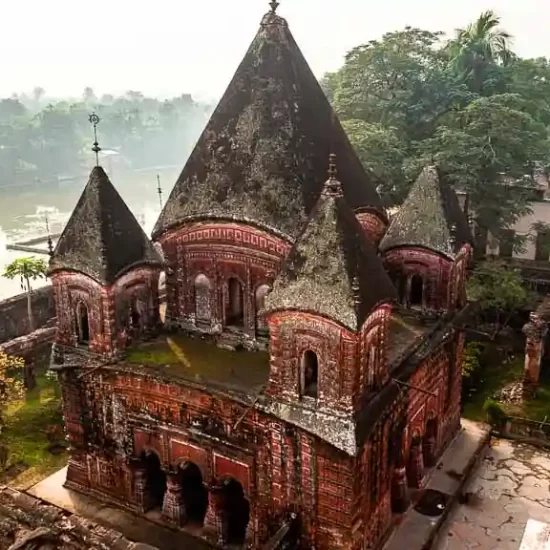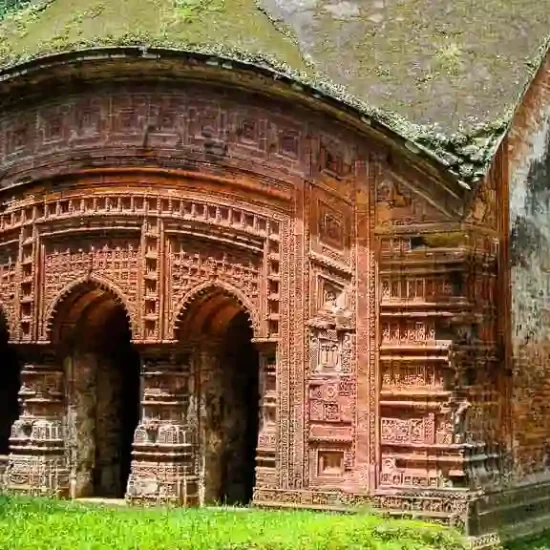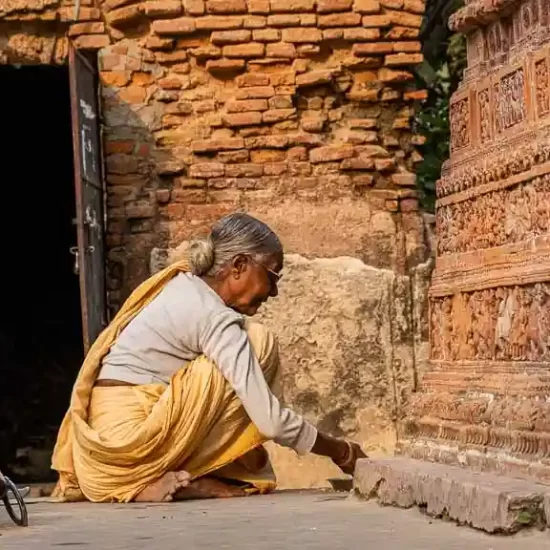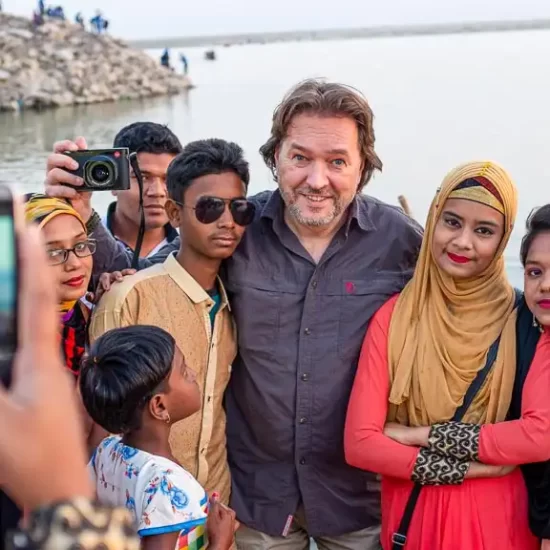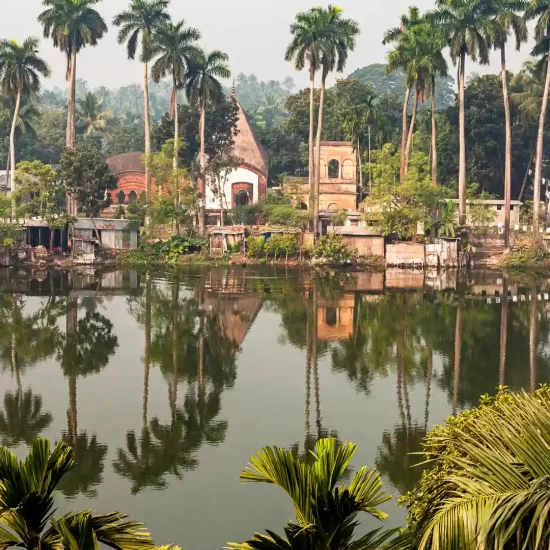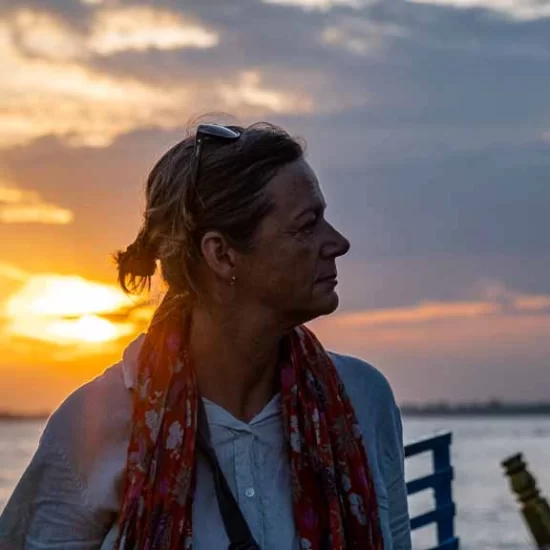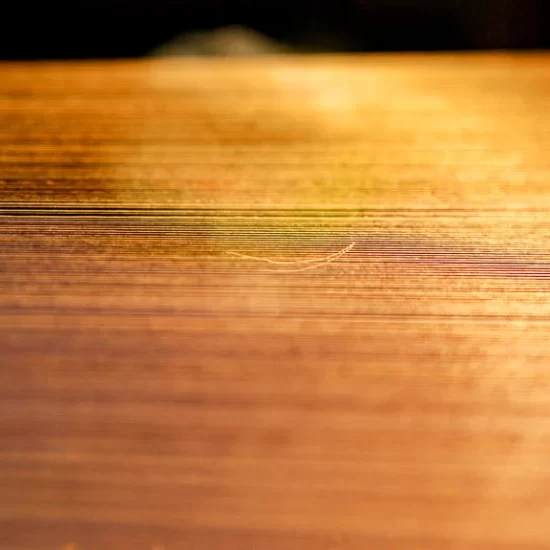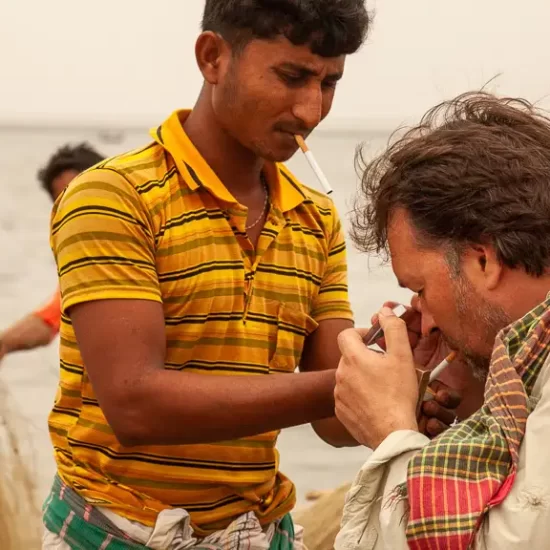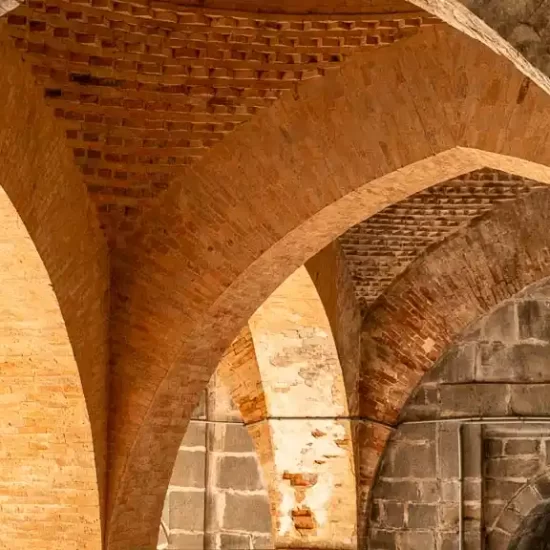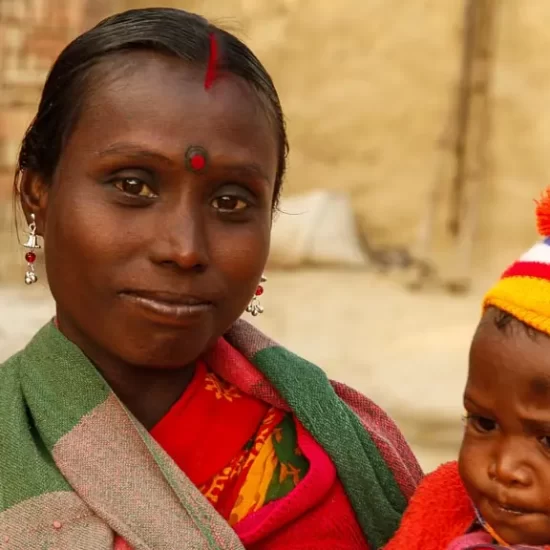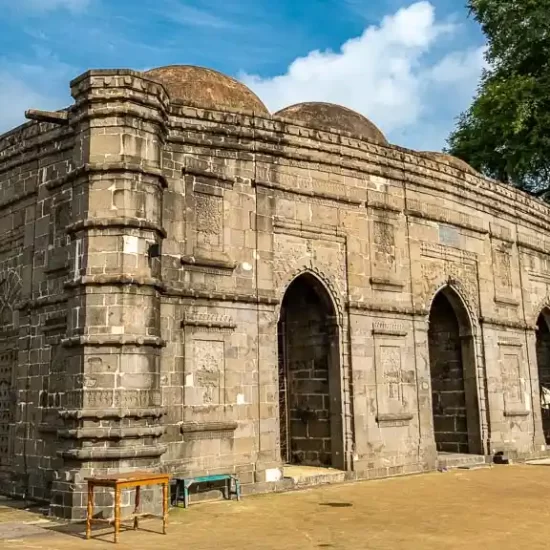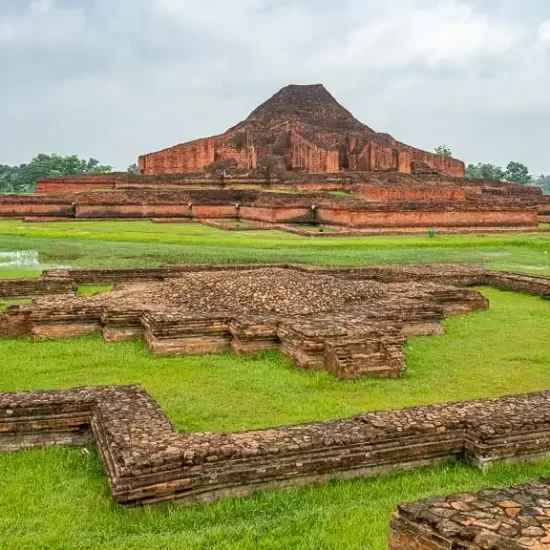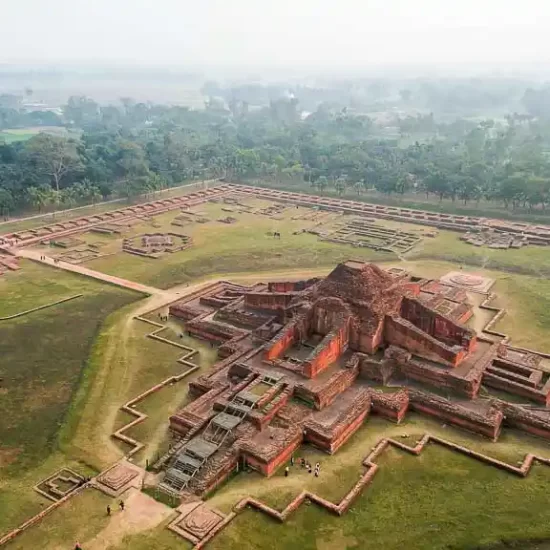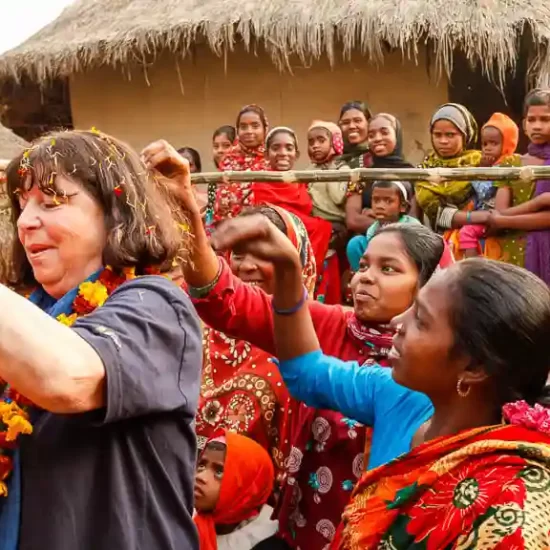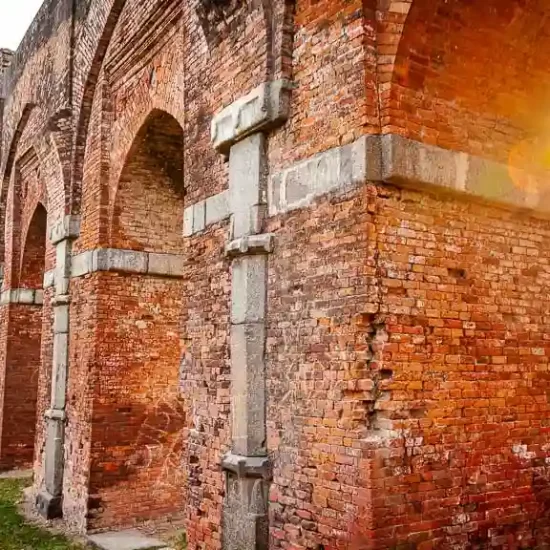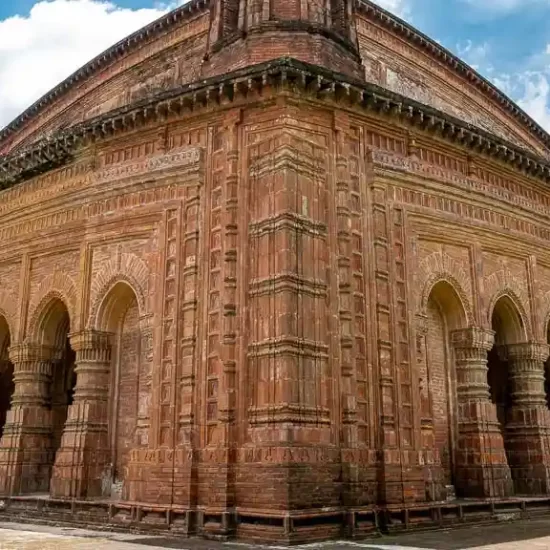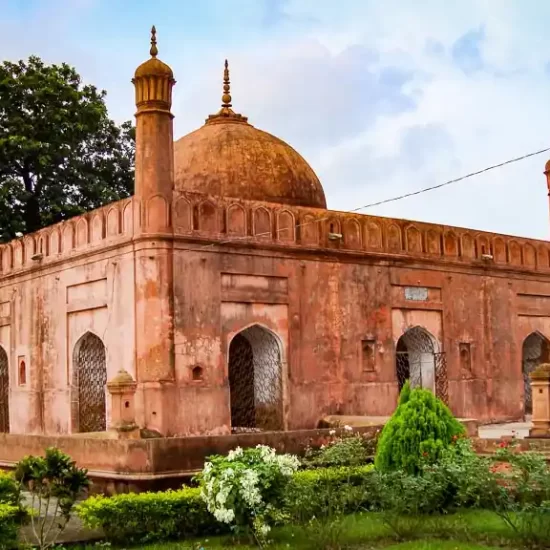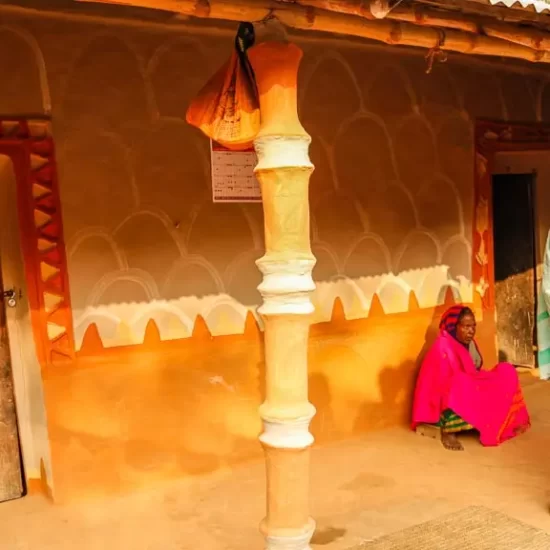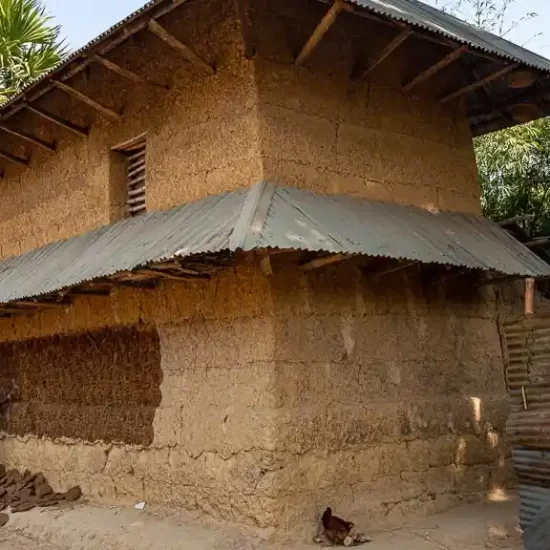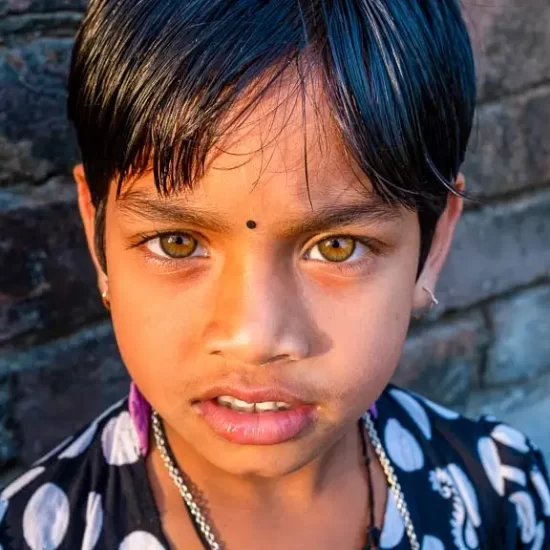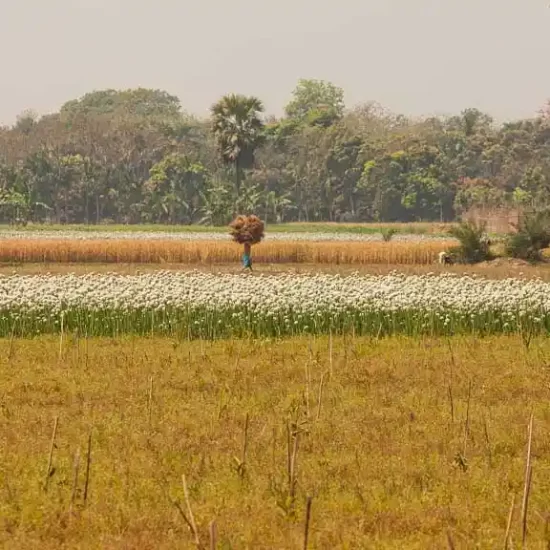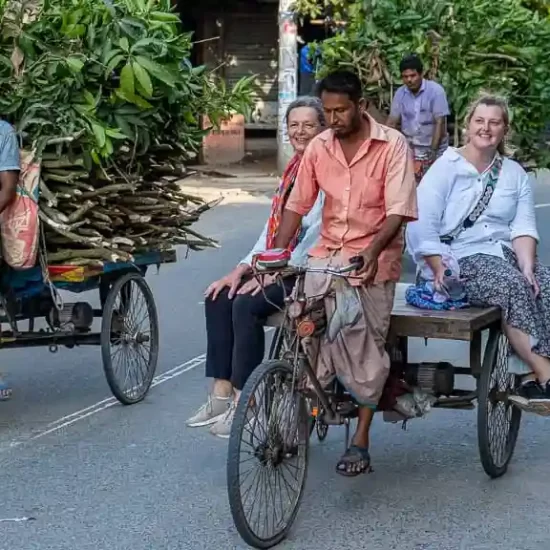Your cart is currently empty!
Diverse Faiths and Shared Culture
$399 per person
A Journey through Hindu, Buddhist, and Islamic Heritage in Bangladesh
Step into the heritage of Hindu, Buddhist, and Islamic cultures in Bangladesh with our 4-day tour. Visit historic temples, royal palaces and UNESCO World Heritage Sites.
Welcome to the world of diverse faiths and shared culture of Bangladesh on a 3-day adventure. Visit ancient temples, royal palaces, and archaeological sites in Tangail, Sirajgonj, Natore, Puthia, Rajshahi, Kushumba, Paharpur, and Bogra. These monuments are not the highlight of the trip; interaction with local communities at their homes and workplaces, spending some time and trying their food, learning about rural architecture, and many more add-ons from the off-the-beaten-path are the most important keys to make this trip memorable! Experience traditional sari weaving, local bazaars, and the famous sweets of Tangail. Not just a trip—a unique way to dip into the history, architecture, and culture of this beautiful country.
This tour provides a unique opportunity to delve into the heart of Bangladesh’s rich culture and history. You will explore religious sites, visit ancient ruins, experience traditional customs, and admire stunning architectural marvels. From the ancient city of Mahasthangarh to the serene Paharpur Buddhist Vihar, you will witness the rich heritage of this fascinating country. Book your adventure today and discover the magic of Bangladesh.
Day 1: Start early from your place and head towards Rajshahi, stopping for breakfast along the way. Visit Tangail Atia Mosque, Navaratna Temple in Sirajganj, Natore Raj Bari, and Uttara Gana Bhavan. Continue to Puthia Temple Village for lunch with a local Hindu family and explore the historic temples. Return to Rajshahi for an overnight stay at a hotel or at a community lodge, with an optional evening walk along the Ganges River.
Day 2: Depart at 7:30 AM for Kusumba Mosque in Naogaon, visiting a local bazaar and a tribal village en route. Explore the Kusumba Mosque, then drive to Paharpur to visit the UNESCO World Heritage Site, Sompura Maha-vihara. After lunch in Bogra, visit Mahasthangarh, Vashu Vihara, and Behular Bashor Ghor. Overnight stay at a wonderful community lodge or hotel in Bogra.
Day 3: After breakfast, drive to Sariakandhi for a boat trip on the Brahmaputra River, observing the impact of river erosion and climate change on char life. Return to Bogra for lunch, then drive back to Dhaka.
- Tour price
-
$
399
starts from
-
Group Size
USD p.p BDT p.p
2 PAX
$617.00 61,700.00
4 PAX
$469.00 46,900.00
6 PAX
$399.00 39,900.00
-
Destination
-
Dress Code
Casual, comfortable athletic clothing, closed shoes, hat. Warm jacket during the winter (November to February). Raincoat/ umbrella during the rainy season (May to August). -
Included
AC vehicle with experienced chauffeur for sightseeing and transfersAccommodation in twin sharing basis as per itineraryAll air, bus, train and launch tickets as per itineraryAll entrance fees and local permitsAll Museum TicketsAll rickshaw/ cycle / boat / local transportsBottled water, soft drinks and seasonal fruits during the sightseeingExpert English-Speaking GuideLocal guide/ escort/ experts/ academicsLunchTrip as per itineraryTypical Souvenir -
Not Included
Any activity not mentioned in the itinerary.DinnerGratuitiesPersonal expenses



